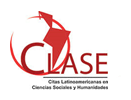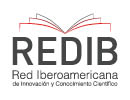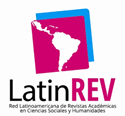The feminine image: the anthropomorphic figurine at the Cerro El Plomo capacocha site
DOI:
https://doi.org/10.21142/DES-1102-2019-317-329Keywords:
Capacocha de El Plomo, Figura antropomorfa femenina, Simbolismo, TextilesAbstract
The Cerro El Plomo capacocha ceremony occurred at the top of a sacred peak, or Apu, situated in the Mapocho Valley, where Santiago de Chile is now located. Archaeologists believe that such an important Inca ritual was not only of a political-religious nature within the conquest of conquered valleys, but that it also functioned as a mechanism of symbolic efficacy, and as a means of achieving the ideological introduction and assimilation of the local ethnic groups that had occupied the valley before the arrival of the Incas.
The use of anthropomorphic figurines as part of the ritual, like the one found in 1954 in the context of an invasion of an archaeological site by tomb robbers, highlights the standardization of symbolic material within the Inca state, as well as the distinctive identity components apparent in the design of textiles. In light of these factors, a semiotic analysis is required, based upon interpretation of the Inca foundation myth as a political and social strategy, as well as that same myth’s symbolic spatial components.
Downloads
References
Augé, M. (1988). Dios como objeto. Símbolos, cuerpos, materias, palabras. Barcelona: Gedisa.
Boletín Museo Nacional de Historia Natural de Chile (1957-1959). 1(XXVII). Brugnoli, P., Jélvez, P. y Hoces de la Guardia, S. (2011). Colores: Un puente
entre pasado y presente. Revista Diseña, 3. Recuperado de http://www.revistadisena.com/colores-un-puente-entre-pasado-y-presente/
Calancha, A. (1638). Chronica moralizada del orden de S. Agustín En el Perú, con sucesos exemplares vistos en esta Monarchia. Barcelona: JCBL.
Corcuera, R. (1987). Herencia textil andina. Buenos Aires: Impresores S.C.A.
Garcilaso de la Vega, Inga (1991). Comentarios reales de los incas. Lima: Fondo de Cultura Económica.
Mignone, P. (2015). Illas y Allicac. La Capacocha del Llullaillaco y los mecanismos de ascenso social de los «Inkas de privilegio». Boletín Museo Chileno
de Arte Precolombino, 20(2), pp. 69-87.
Morssink, R. (1999). La plata en las culturas andinas. Chungará, 31(1), pp. 49-80.
Rostworowski, M. (2017). Los incas. Lima: Instituto de Estudios Andinos.
Rostworowski, M. (2005). Redes económicas del Estado inca: el ruego y la dádiva. Lima: Instituto de Estudios Andinos.
Siracusano, G. (2005). El poder de los colores. De lo material a lo simbólico en las prácticas culturales andinas. Siglos XV-XVII. Buenos Aires: Fondo de
Cultura Económica.
Downloads
Published
Issue
Section
License

Esta obra está bajo una licencia http://creativecommons.org/licenses/by-nc-sa/4.0/



















